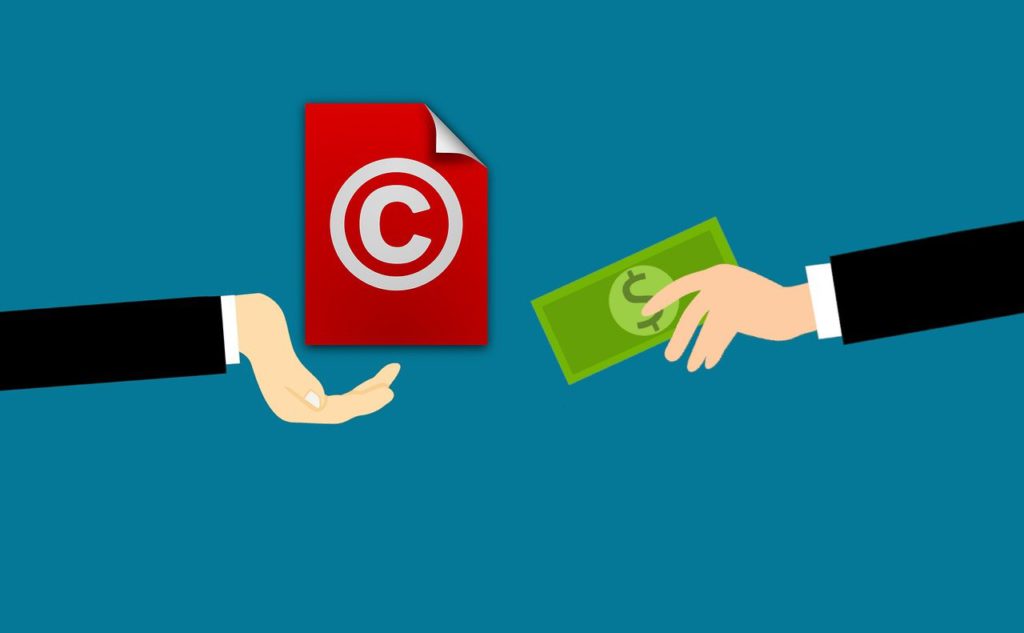Once IP has been identified, a comprehensive strategy may then be formed to make full use of it. This starts with collecting, identifying and analyzing the available IP data in order to audit your Company’s resources. These resources may be capital, human or innovative. How detailed your remaining IP strategy is depends entirely on the kind of organization you’re running. Products, manpower and portfolio all influence what your IP strategy should be.
A general rule of thumb is to start by broadly aligning your innovation and creativity with your organizations’ goals and objectives. Adding this to the resources available to you, both to develop new IP and to analyze how you IP impacts product sales or licensing, gives the most basic of IP strategies. While this may strictly be all that’s required for very small startups or even medium sized companies with little in the way of IP, there are plenty of components involved in the process.

IP Valuation
The value of any IP is relative to the Company that owns it, Multiple factors decide this. Revenue Contribution (what IP supports the profitable products, and how much IP revenue is acquired from direct transactions like licensing), Margin Contribution/Market Benefits (competitive advantage the IP gives over other market products, as well as how much more the Company may charge as a result of this), and Organizational Value (effect of IP on potential company financiers) are all things to take into account beyond just the sale value of the IP when determining IP worth.
Market-Driven Considerations
The product and the market very closely influence what level of IP investment and protection is required. Innovative fields, such as tech, often require a high degree of IP while fields that are more about variations of existing products (such as soaps, for example) require less IP. It’s advised that all of the following influences be considered when forming the strategy:
Market Composition: Size and value of markets determine the amount of investment hat must be put into them. Terms may also be considered- if the Company’s plans are long-term and important, significant resources should be invested in the IP. On the other hand, companies can also enter small markets for limited time if they have leftover rights from prior investment which are at the end of their exploitation capabilities.
Product Life Cycle: The kind of product determines the type of IP that should be used to protect in. If the product has only short-term value, Trade Secret protection is far more effective than Patent protection. On the other hand, important technology-defining products, or products that can far too easily be adapted by reverse engineering by competitors, must be protected by patents.
Competitors and Potential Infringers: Identification of the competitors, their technology, and the possibilities of them attempting to litigate against the Company need to be taken into account. Other avenues of infringement or quasi-infringement involve parallel imports and grey markets. This, however, is less likely to affect very small startups, as that scale of infringement is usually a problem more popular brands have to deal with.
IP Landscaping and Freedom to Operate Searches
In case of certain products or markets, it may be advisable to do an IP landscaping search or a freedom to operate search. The former gives a general overview, both technologically and geographically, of what the situation is the IP world is. The latter is a more comprehensive search that looks into all current, potential and future threats to the IP. These are expensive and time-consuming, but may be invaluable to some Companies.
When deciding on if to invest in these searched, the Company can look into certain criteria. Highly litigious, competitive IP is more likely to spark potential lawsuits. How much money the IP brings in and how much tolerance the business will have in the event of the collapse of such IP will determine the degree of financial investment in IP protection.
Defensive and Offensive Strategies
Collecting, collating and organizing all of this data is going to be the most time consuming and challenging part of developing an IP strategy. Once that is done, you will have an idea of what path you will take and how much resources you’re willing to spend on IP protection. Accordingly, you can now devise both an offensive and a defensive strategy- most company IP strategies are a combination of the two to varying degrees.
Offensive IP strategies are usually implemented by Companies with very strong, high-quality core IP. In addition to defending IP from infringers, offensive strategies focus on the acquisition of external IP rights to fill in any gaps left in their own defensive strategy. Patent thicketing (ie, the acquisition and development of all related technologies such that the core Ip is untouchable), for example, is a common offensive IP strategy. Offensive strategies are very time-consuming and require a dedicated IP cell with considerable resources, and so should not be attempted unless the IP is valuable enough to warrant such attention.
Defensive IP strategy is usually sufficient in many cases- this deals with moving forward with the business and tackling any IP problems that may arise as they come into the picture. Rather than confrontation, defensive IP strategies focus on diversion and alternative routes, such as designing around existing IP, changing products to not infringe on other IP and so on.
Conclusion
All of the above are just general guidelines on what to consider when formulating an IP strategy. However, it must be noted that due to the nature of IP there may be considerations specific to the technology, the creative work, or the market that must also be considered for the IP strategy. There is no paint by numbers checklist- IP strategies are, like IP itself, constantly evolving and organic in nature, requiring regular updates and repeated analysis.
Author: Varsha Valsaraj, Legal Associate at PA Legal.
In case of any queries, kindly contact us here.